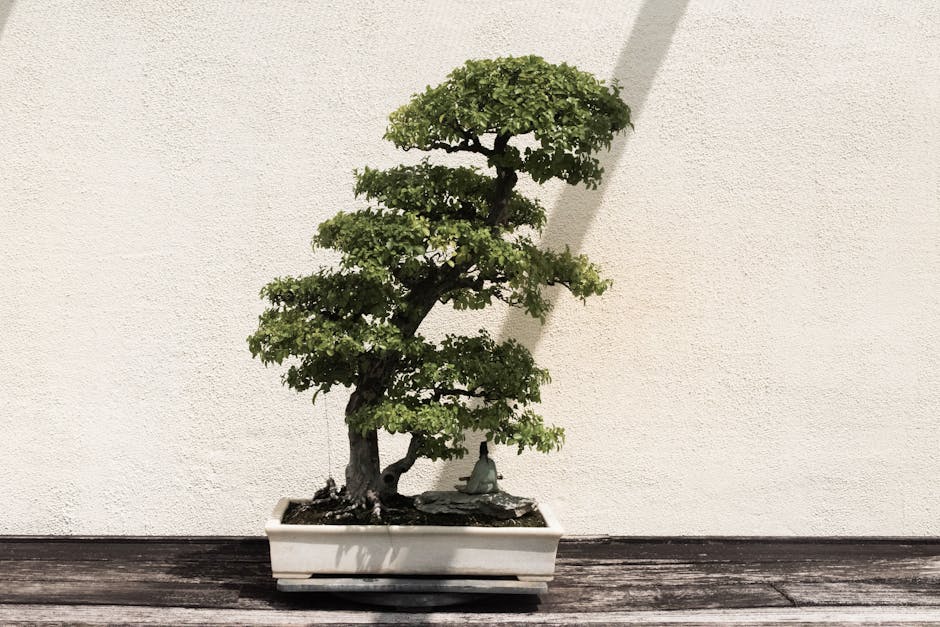When I first started researching bonsai trees, I kept seeing a weirdly heated debate pop up online: “There’s no such thing as an indoor bonsai.” That statement threw me for a loop.
I live in an apartment. I don’t have a backyard. I was drawn to the idea of growing a little tree on my windowsill—something beautiful and calming. But this comment kept showing up, over and over again:
“Bonsai are outdoor trees. Period. If you try to grow them inside, they’ll just die.”
Is that true? Is indoor bonsai just a marketing gimmick? Will I waste my money and end up with a sad, dead twig in a tiny pot?
Let’s take a closer look. As a beginner myself, I dug into this question—and what I found surprised me.
There’s Truth to the Statement (But It’s Not the Whole Story)
The bold claim that “indoor bonsai doesn’t exist” actually has some roots in bonsai tradition.
Most bonsai trees—like junipers, pines, and maples—are temperate climate trees. That means they’re designed by nature to live outdoors, experience all four seasons, and go through a dormant phase in winter. If you try to keep these types of trees indoors, especially without proper lighting and cooling conditions, they will struggle. Often, they’ll die within a year or two.
So yes: keeping traditional outdoor bonsai trees inside your home can absolutely lead to problems. That’s where the strong opinions come from. Experienced bonsai growers have seen this mistake many times and are trying to save newcomers the frustration.
But—and this is a big “but”—that doesn’t mean all bonsai trees must be kept outdoors.
Some Bonsai Species Are Well-Suited for Indoors
Here’s the key point most critics leave out: Not all bonsai trees are the same.
There are tropical and subtropical species that naturally grow in warm, humid climates. These trees don’t need a winter dormancy period and can thrive indoors if you give them the right conditions.
Popular indoor-friendly bonsai species include:
- Ficus (especially Ficus Retusa or Ficus Ginseng): Tough, forgiving, and great for beginners.
- Jade (Portulacaria afra): A succulent that loves dry conditions and tolerates neglect.
- Chinese Elm (Ulmus parvifolia): Can adapt to indoor life with enough light.
- Schefflera (Dwarf Umbrella Tree): A tropical bonsai with a unique look and resilience.
These trees are often used in beginner bonsai kits marketed for indoor growing. And with proper care, they can thrive indoors for many years.
Why Indoor Bonsai Often Fails (And How to Prevent It)
So why does the “indoor bonsai is a lie” idea persist?
Because growing bonsai indoors is more challenging than people expect—especially if you just plop a tree on a shelf and hope for the best.
Here are the three biggest reasons indoor bonsai trees fail:
1. Lack of Light
Most homes don’t provide enough natural light for healthy bonsai growth. Even a bright window might not be enough, especially during fall and winter.
Solution: Invest in a small LED grow light. These are affordable and game-changing. You can use a timer to simulate daylight hours and give your bonsai the full-spectrum light it needs.
2. Dry Indoor Air
Tropical bonsai species prefer humidity, and most indoor environments—especially with air conditioning or heating—are very dry.
Solution: Place your bonsai on a humidity tray or pebble tray filled with water. As the water evaporates, it increases humidity around the tree. Misting the leaves lightly a few times a week can help too.
3. Overwatering or Underwatering
In small pots, bonsai trees are sensitive to watering habits. Indoors, the soil may dry out more slowly, leading to overwatering if you stick to a strict schedule.
Solution: Learn to check soil moisture with your finger or a moisture meter. Water deeply when the topsoil feels dry—not on a set calendar.
Bonsai is a Craft, Not Just a Plant
One thing that often gets lost in beginner guides is this: bonsai isn’t just about the tree—it’s about the process. It’s a practice of patience, care, and observation.
If you’re expecting a bonsai tree to act like a pothos or a succulent that you can more or less forget about, you’ll be disappointed.
But if you treat it like a living craft—something you learn from and grow with—bonsai becomes incredibly rewarding.
Indoor bonsai isn’t a myth. It’s a challenge—and a beautiful one.
Marketing Gimmick… or Gateway to a Lifelong Hobby?
Yes, there are kits out there that are poorly marketed. For example, “indoor juniper bonsai kits” are commonly sold online—even though junipers really struggle indoors. Those kits are often a recipe for failure and frustration.
So is indoor bonsai a lie? No—but you do need to be an informed buyer.
Before you purchase a kit or plant, ask yourself:
- Is the species truly suited for indoor life?
- Does it come with proper care instructions?
- Am I willing to provide adequate light and humidity?
If the answer is yes, you can absolutely enjoy growing a bonsai tree indoors—even as a complete beginner.
Final Thoughts: What I’m Doing As a Beginner
I created this site to document my own beginner journey into indoor bonsai. I haven’t been doing this for years—I’m learning as I go. But I’ve already discovered that while there’s truth in the criticisms of “indoor bonsai,” there’s also a lot of outdated gatekeeping.
You can grow a bonsai indoors. You just have to pick the right species, set it up with care, and be willing to learn.
So don’t be discouraged if you see someone on Reddit saying you’ll kill your tree. Instead, keep learning, choose wisely, and enjoy the process.
I’ll be posting more beginner-friendly articles soon, including:
- Reviews of actual indoor bonsai kits
- My experience with different species
- Step-by-step care routines tailored to indoor growers
Whether you’re just curious or already on your second or third tree, you’re welcome here.
Let’s grow together.
